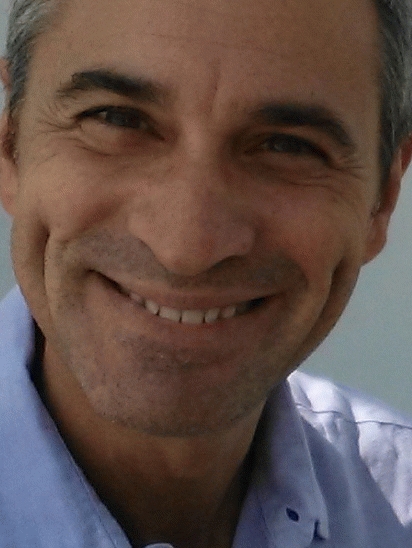Getting into Robotics: Dario Floreano

What is the most adventurous thing you have ever done?
When I turned 18, I embarked in a 30-day train tour across Europe with a school mate and very little money in the pocket. Our InterRail ticket, as it was called at that time, gave us unlimited travel on all Western European railways. I worked in a farm in the Norwegian Fjords, slept in bushes of a roundabout in Copenhagen, learned how difficult it was to live in Paris without knowing a word of French, enjoyed nightlife in Madrid, took an overnight train to Lisbon to get some sleep and accidentally discovered how beautiful Portugal is, and marveled at the sight of the Leman lake on my way back to Italy. This experience opened my eyes to the diversity of other countries and cultures and after that the north-east region of Italy where I grew up became too small and peripheral.
Did you always know you wanted to study robotics or did you at any point consider other career paths?
When I was 18, I was so undecided about what to do in my life that my father got worried and suggested that I enrol in the Military Academy where I would get strong guidance. I qualified for the Air Force Academy, but fortunately my mother thought that I should first get a proper education, and so I went to regular university in Trieste. I first received a master in cognitive science with a specialisation in visual psychophysics and became interested in computational neuroscience and artificial intelligence. In order to get better training in exact sciences, I later took another master degree in computer science with a specialisation in neural computation in the UK.
After completing the studies, I realised that the brain could not be modelled and understood without taking into account body and behaviour, and at the beginning of the 1990’s I became interested in a fringe movement, called Artificial Life, where biologists, engineers, computer scientists, and psychologists were discussing how artificial intelligence should be revisited with the help of robots. That was the time when I pioneered with other colleagues a field called Evolutionary Robotics, an area of biologically inspired robotics.
What made you branch out into working in flying robots?
By the turn of the millennium, biologically inspired robots started to make their way in mainstream robotics, but were mainly a scientific curiosity which had not yet found a killer application. As a new assistant professor, I felt challenged to show that biological inspiration could help solving important problems and find its way in products that people can buy. One of the remarkable properties of biologically inspired systems is that they often rely on simple mechanisms and processes to quickly and robustly solve specific problems. As one of my first PhD students was an airplane pilot and an RC model aircraft expert, we started to think how we could extract design and control principles from insects to make small drones, which at that time did not exist, capable of autonomously and safely fly in very cluttered environments, such as buildings and cities, where GPS signal is not reliable.
What role do you think flying robots will play in society in the future?
They will redefine and improve many important fields, such transportation, information, communication, agriculture, and even tourism. Making sure that these drones will be safe, capable, and acceptable for society is still challenging, but I do not see technological roadblocks, as I described in a recent article written during my sabbatical at Harvard with Rob Wood. Floreano and Wood (Nature 2015)
What advice for those who would like to consider studying robotics in the future?
Robotics is one of the most promising fields of engineering and robots are the next technology revolution after the computer and the internet. Intelligent robots will continue to help, entertain, protect, and extend our lives. Instead of robots, we will name them after their function: vacuum cleaners, cars, exoskeletons, drones, co-workers, planetary rovers… But robots will also allow us to go beyond existing functionalities by blending humanity, artificial intelligence, and electro-mechanical bodies in new ways. This is why I think that perspective students should choose a program offering a broad set of topics and be ready to work in interdisciplinary teams.
… and to those who which to follow an academic path?
I think that an academic path in robotic does not differ much from other academic paths. It needs a genuine drive to understand how things work and make new things or discoveries; it requires a critical mind and a determination to persist despite failure and criticism; it demands the ability to communicate complex themes to lay persons and to stay mobile for a long time. It all sounds very difficult, but it gives freedom, intellectual and social stimulation, and a chance to change the world.